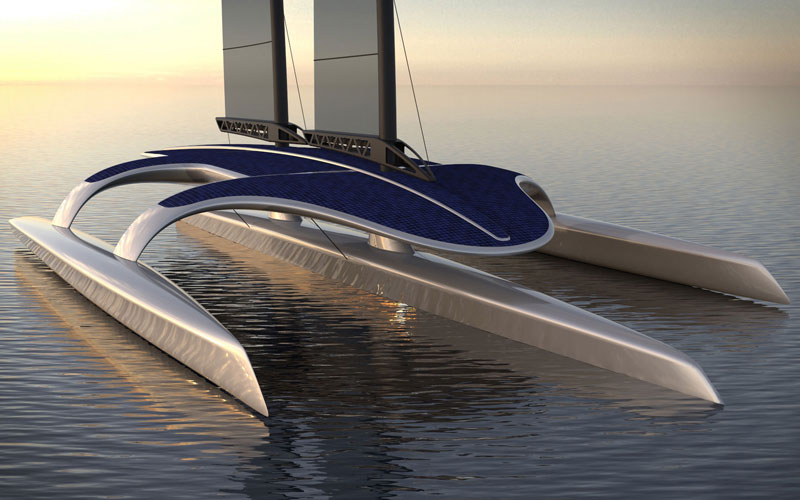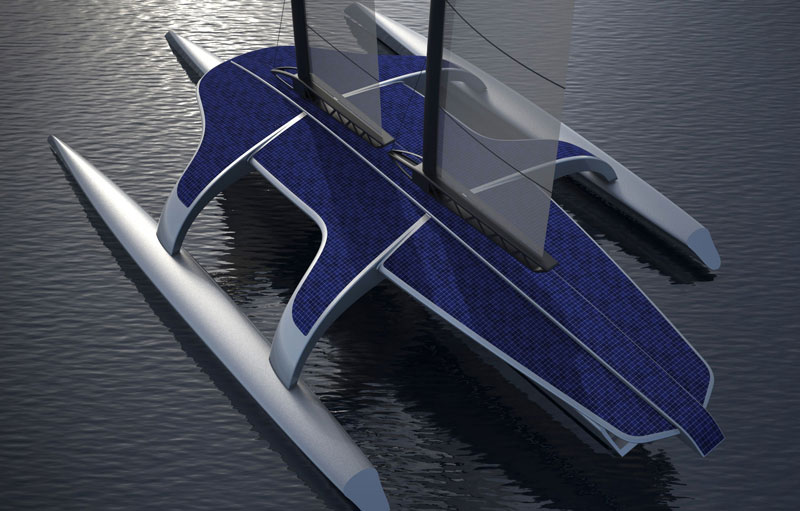Technology
The 21st century Mayflower:
preparing for an autonomous voyage
The Mayflower Autonomous Ship is currently under development and preparing for its maiden voyage in 2020. JOE BAKER finds out more about the components that will make this autonomous voyage possible
In 1620, just over
100 pilgrims cast off from Plymouth, UK, on an expedition to the other side of the Atlantic Ocean. After braving a 3,000-mile voyage aboard the Mayflower, the survivors set down on the east coast of the New World, giving birth to a colony that would help shape the course of American history.
Little did those pilgrims know that several centuries later, scientists and ship designers would be working to produce a 21m-long autonomous vessel that would recreate their journey – only this time, without a single person on board.
This is the aim of the Mayflower Autonomous Ship Project, which is being undertaken by a consortium of businesses, including autonomous craft specialists MSubs, Plymouth University and yacht designer Shuttleworth Design. With the support of a crowdfunding campaign and numerous sponsors, the project aims to create a wind and solar-powered yacht that will chart its own course across the Atlantic in 2020, as part of Plymouth’s ‘Mayflower 400’ celebrations.
However, this inaugural journey is just the start for the vessel, codenamed MAS 400. Following its arrival in the US, it will be chartered for scientific expeditions worldwide, with docks on board housing unmanned vehicles to collect data and perform both oceanographic and atmospheric testing.
According to project manager Paddy Dowsett, the Mayflower is being designed to “encapsulate the pioneering spirit of the original Pilgrim Fathers”, as well as reflect Plymouth’s status as a maritime hub and attract high-tech maritime businesses to the city.
All images courtesy of Shuttleworth Design
Green and robust ship design
Initially, the MAS 400 sported a trimaran design with a multi-hull structure designed to reduce wind and wave impact. However, Dowsett says this was ultimately too expensive and complex for many UK shipyards to handle. Switching to a traditional mono-hull design will make the vessel more robust and less susceptible to the elements.
“If it does capsize, a multi-hull is all but impossible to right again, particularly by itself, so a mono-hull is better suited for bad weather,” says Dowsett. “Of course as a research vessel it’s going to be relatively intelligent so we wouldn’t have to enter the worst of the worst. We or the ship, depending on what mode it’s in, would be monitoring the weather conditions very carefully.”
The large surface area of the vessel will be bedecked with photovoltaic cells that will convert sunlight into energy
Despite the design change, the project is still committed to making MAS 400 as environmentally friendly as possible. In addition to a two-masted sailing rig, the large surface area of the vessel will be bedecked with photovoltaic cells that will convert sunlight into energy for propulsion. While the ship is propelled by wind, its propeller blades will run in reverse, generating power through their shafts.

Image courtesy of
Svein Kleven is senior vice president of engineering and technology for Rolls-Royce. Image courtesy of Rolls-Royce
Pioneering autonomous technologies
The Mayflower will be fitted with a number of innovative systems to support navigation, with many of these supplied by project partners. For example, Silicon Sensing has provided a DMU30 inertial measurement unit that will feed accurate ship’s attitude data to the autopilot system controlling MAS 400. It features high-tech gyros and accelerometers that work in tandem to detect motion around the ship.
Another large sponsor of the project is Veripos, which offers positioning services using geostationary satellites that deliver high accuracy worldwide, even under difficult marine operating conditions. The company has provided two GNSS receiver systems to MAS 400.
MAS 400 is set to be an effective tool for testing autonomous navigation software
“These units are capable of Multi Constellation reception, which provides the highest levels of positioning performance in terms of accuracy and reliability, no matter what region of the world the Mayflower Autonomous Ship will be sailing,” Veripos’ Jonny Gerrard said.
In addition to its role as a scientific research vessel, Dowsett says MAS 400 is set to be an effective tool for testing autonomous navigation software. Not only is the mid-Atlantic a safe testing area, but MAS 400’s smaller size will make it a cheaper test platform for companies in the autonomy market.
Altogether, the MAS 400 is expected to take two years to build, outfit and test ahead of its Mayflower anniversary launch in 2020. In the meantime, MSubs has purchased a smaller, 6m-long vessel that will be used to test its autonomous software, as well as supporting systems that will be used to control the sailing rig.

Image courtesy of
Enhancing the regulatory framework
Scurvy may have been the main problem facing sailors on the original Mayflower vessel, but for MAS 400, there is a more modern challenge: legality.
Grey areas still surround the regulation of autonomous vehicles, particularly in non-territorial waters that MAS 400 is sure to enter. International conventions have not yet caught up with this new technology due to a number of difficulties, one of which is legal and insurance issues related to responsibility; if an autonomous ship causes a collision, does the blame fall with the system provider, or the person monitoring it onshore?
Dowsett says that having a vessel on some form of intelligent autopilot for an Atlantic crossing is relatively straightforward, particularly when it comes to following a GPS input. The technologies required to support this process are already seen, for example, on ARPA displays on ship bridges, which can calculate an object’s location and automatically warn the captain of collision.
The difficulty lies in bringing the vessel to a level of autonomy where it is able to comply with anti-collision regulations that at the moment cater to manned vessels. For example, a power-driven sailing vessel might be easy for a captain to recognise, but the same can’t yet be said for unmanned navigation software.
“It’s a subtlety that is very difficult for an autonomous ship to pick up on and in complex shipping situations where you've got to balance a number of requirements, that’s where it’s going to get difficult,” says Dowsett. “In the simplest terms a vessel could stop and let everything pass it, but we need to be slightly better than that.
The UK is one of several countries leading the charge for autonomous regulation in Europe
“We’re probably only a year or two years away from producing the software – the challenge then is to have the International Maritime Organization (IMO) actually adopt [it].”
The UK is one of several countries leading the charge for autonomous regulation in Europe. The Maritime Autonomous Systems Regulatory Working Group, for example, is on the path to forming a legal framework for the UK and other countries to follow. Meanwhile, the IMO is currently in the process of examining how existing international regulations can be adapted to cater for autonomous vehicles.
The regulatory issue is one that covers a range of ongoing autonomous projects at sea, and Dowsett predicts a ‘tipping point’ will happen soon. In this respect, the success of the Mayflower Autonomous Project will not only provide a worthy memorial to the Pilgrim Fathers, but it could also provide a reliable test case that proves the ability of autonomous systems to navigate safely and lawfully.
“This project is part of a whole plethora of activity,” he says. “The bit that the Mayflower offers is that first transatlantic crossing, which hopefully in ten years’ time will be commonplace.
“This technology coming in is well past the R&D stage. The only brake at the moment is the regulatory framework. What we are aspiring to do with the Mayflower is to continue to put the pressure on to release that brake. By sailing across the Atlantic, you can show that the technology's there and you can do it safely.”